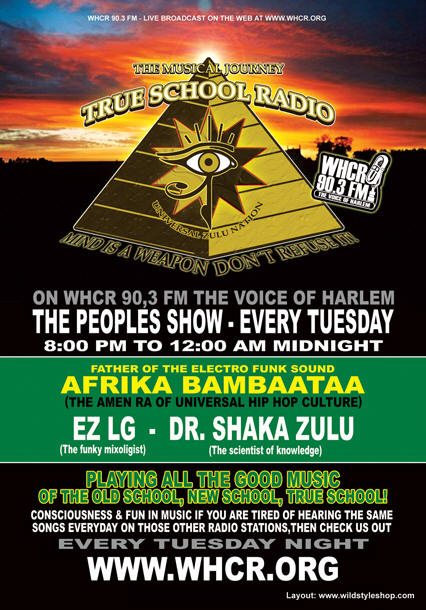




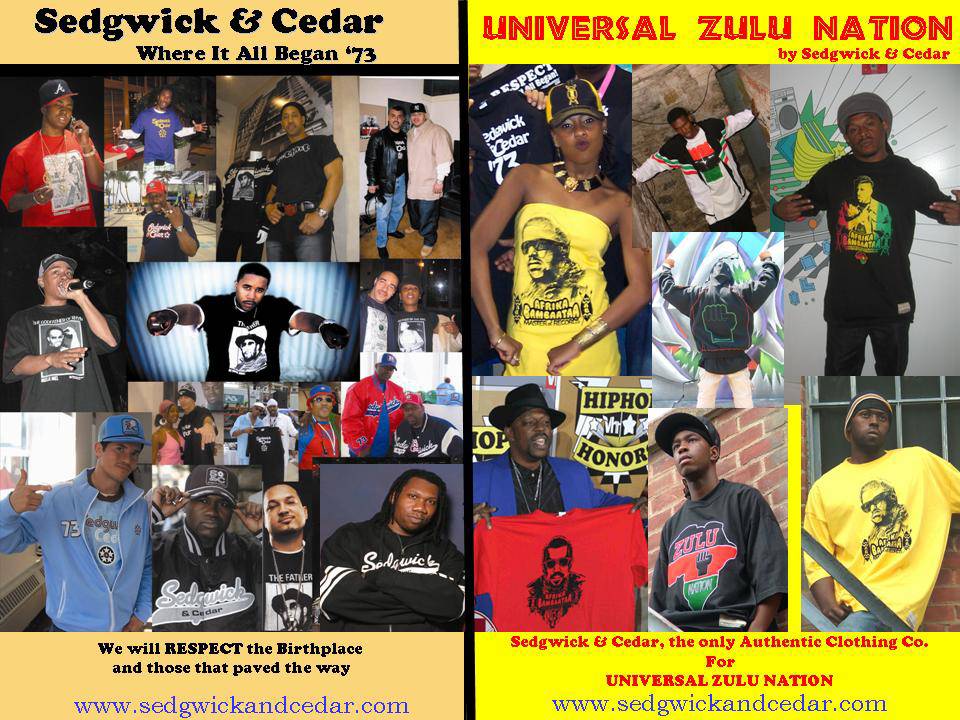

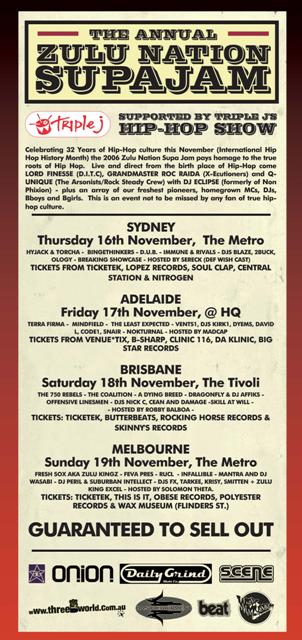
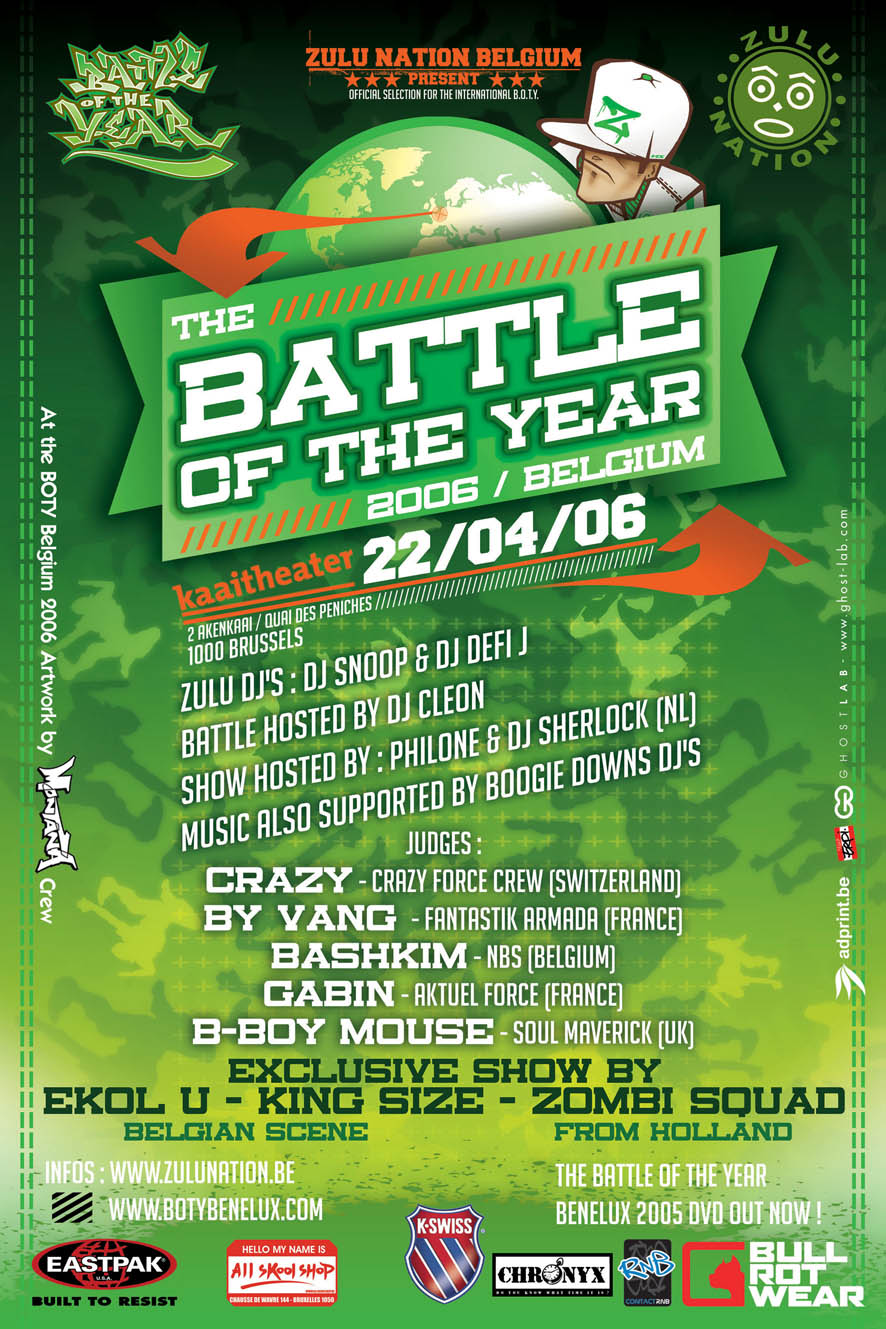
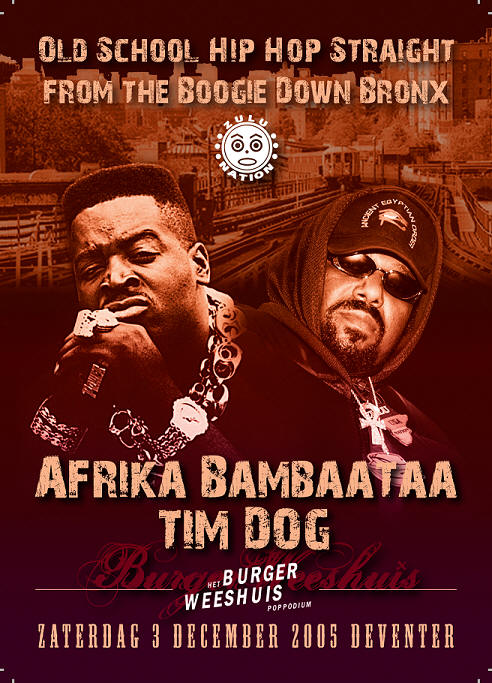
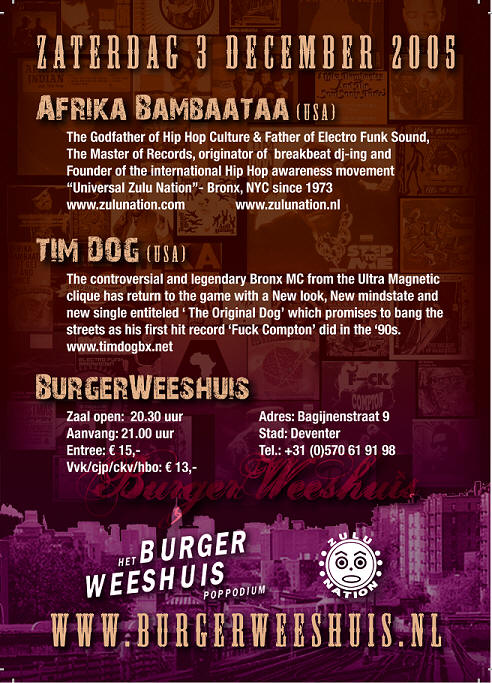
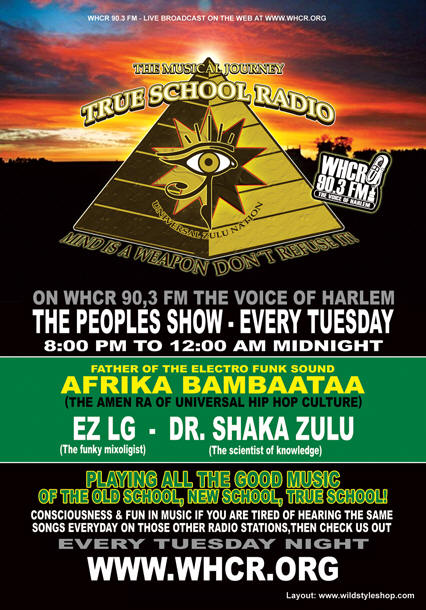

Press Release
Black Noise Hip Hop Group
News
Contents
- Black Noise DVD "Hip Hop How To Vol 1" in stores now
- Black Noise new website www.blacknoise.co.za
- Black Noise recording new CD
- Emiles new book, My Hip Hop is African and Proud
- Cape Flats Uprising Records releases HTH 5 & 6 & Isaac Mutant
- African Battle Cry 2005 3rd Dec - 23rd Dec
- Black Noise years plan for 2005
- Contact Information
- Black Noise DVD "Hip Hop How To Vol 1" in stores now Check
www.bowline.co.za - Its the first of a set of 5. Vol #2 shot in Dec on
B-boy/girl history in South Africa and a "how to" do all the moves. Also
available on DVD from Black Noise is African Hip Hop Indaba 2003 & 2004
- Black Noise new website www.blacknoise.co.za For many year Black Noise
have been hosted by Making Music, but the group has set up its own site at
www.blacknoise.co.za. The new designer is currently updating the site with
lyrics, links, hip hop shop, members personal information, sponsors and
give-aways for members to the groups quaterly newsletter. Plans are also in
place for the creation of Da Juice as an internet magazine, so keep checking
the site for developments
- Black Noise recording new CD
Black Noise recording new CD for release early in 2005. the group will
release it independently as usual and plan to tour nationally promoting it.
Already Angelo has created interesting new dance beats, while Emile has
written a variety of tracks from the usual b-boy elektro to dancehall to
dance tracks to knowledge to rock to ... Black Noise supporters will not be
dissapointed by this one
- Emiles new book, My Hip Hop is African and Proud Book will be out at the
beginning of Dec 2004. It is a look at African Pride learnt from Hip Hop
through Emiles' 22 years of being involved in South African Hip Hop Scene.
It also contains poetry, short stories and articles Emile wrote over the
years about hip hop and other issues.
- Cape Flats Uprising Records (Emiles' underground record label) just
released Africasgateway Heal the Hood Compilation 5 Check
www.africasgateway.com for details of artists on this one Isaac Mutants new
CD Side Show Freak Vol 1 Isaac is the GOD of Afrikaans rhymes on the Cape
Flats. Uncompromising in what he rhymes about and how he delivers this one.
18 tracks that will change your view on what Afrikaans rhyme actually should
to sound like. A definite for your collection.
Heal the Hood Compilation 6
Tracks and freestyle battle from African Hip Hop Indaba 2003. Tracks by Sky
189, Mefic from Sweden, Frida Davul, Emile YX?, Ace, Def Boyz, Da Mates and
Krooked Tongues Crew
- African Battle Cry 2005 3rd Dec - 23rd Dec Focus as usual is on hip hop
development in the townships Ocean View, Mitchells Plain, Grassy Park,
Guguletu, Khyalitsha, Atlantis etc Finale at Podium Hall 23rd Dec - Hip Hop
Fancy Dress - Battles MC DJ B-boy/girl & Fashion Show - Prizes- Give-Aways
etc
- Black Noise years plan for 2005
Jan & Feb- First leg of the Southern African Hip Hop Development Tour
Main focus will be around dancing, while we will also cover all the other
elements of the Culture.
DJing, MCing/ Rapping, Writing/ Graffiti and
B-Boying/ Breakdancing
19th - 21st Mossel Bay
22nd - 25th Oudtshoorn
26th - 28th Port Elizabeth
29th - 31st East London
1st - 4th East London
5th - 7th Transkei
Black Noise Album release
What is Hip Hop Book release
March - 2nd leg of the Southern African Hip Hop Development Tour
Cape Festival Co-inside with launch of second DVD in “Hip Hop How To series
Mia and Sanna, “Swedish Hip Hop Dance Twins” Tour South Africa with Black
Noise
April 1st - 4th April World Hip Hop Summit in France
5th - 28th April Norwegian Tour
May - Freestyle Session, South Africa
3 Californian B-boys judge and battle at the event
June - National African Hip Hop Indaba 2005
Hip Hop developmental tour throughout South Africa
Week long stay in each town with workshops and battle at end of week
July - National African Hip Hop Indaba 2005
Hip Hop developmental tour throughout South Africa
3 day stay in each town
30th July - 7th August performance in Stockholm, Sweden by Black Noise
August - African Hip Hop Indaba 2005 Finals
26th August National MC “Rap” & DJ Champs at the DromedarisHall,GoodHope
Centre 27th August National B-boy/ B-Girl” Breakdance” Champs “Battle of the
Year”, South Africa in the Main Hall, Good Hope Centre 28th August National
Writing “Graffiti” Champs
Oct & Nov- Heal the Hood Third leg of the Southern African Hip Hop
Development Tour
December - African Battle Cry 2005 , 10 leg Western Cape Community tour
10 different venues from the previous year
- to promote hip hop culture and positive youth activities Finale is the end
of year celebration and acknowledgement of youth in the hip hop culture
23rd Dec 2004 - African Battle Cry Finale – Podium Hall or Good Hope
Centre
31st Dec New Year Hip Hop Jam
- Contact Information
Contact Person:- Emile Jansen
email:- emiley@mweb.co.za
or blacknoisesouthafrica@hotmail.com
Tel #:- + 27 21 706 0481
Cell :- + 27 (0) 82 3958125
P.O.Box 31184
Grassy Park 7888
Cape Town 8000
South Africa
www.blacknoise.co.za
Australian Hip Hop – Melbourne styles.
To trace Australia’s culture of Hip Hop back to its origins we need to travel back to the early 80's. In the beginning, Melbourne Hip Hop Culture was predominantly influenced by graffiti and b-boying (Breakdancing). The first real influences felt by B-Boys and B-Girls were from the video clips Malcolm McClaren’s Buffalo Gals and Herbie Hancock's Rockit.
The book Subway Art, by Henry Chalfant and Martha Cooper was also a major early influence and was regarded almost as a bible or rather, an authoritative guideline to the art of Graffiti. At the time, across Australia, it was the most stolen book from both local Libraries and stores.
Early writers in Melbourne would religiously gather in the “Old City Square” on Saturdays where there was lots of open space and a council provided tagging wall. Many of the artists would then walk along the train lines to take photos of new work. The “Old City Square” had what was originally a small record shop named Central Station Records, which stocked the latest dance, electro and hip hop sounds available at the time.
Both B Boys and writers would also gather at the Marble, which was not a specifically significant building or place, but was so named for its marble floors. The Marble was a place where people would swap fat laces, and discuss developments in graffiti, b-boying and the other elements of Hip Hop culture.
In late 1984 the Rock Steady Crew toured Australia which heightened the influence of break dancing, Hip Hop and electro music in the general community, and strengthened the growing links within the Australian Hip Hop Community.
At this time, the national music television show Countdown hosted a national b-boying competition which was judged by the Rock Steady Crew and won by a Melbourne crew. This had the double effect of demonstrating that Australian Hip Hop was indeed a national movement, and that Melbourne was a place where people were the influence of Hip Hop was alive and strong. It also showed the rest of Australia that Melbourne’s b boys were highly skilled.
It was around this time that one of the strongest early influences arrived in Australia. The movie Beat Street gave birth to a new generation of B-boys and writers, and gave a further sense of direction to those already immersed in the subculture. It may also be said that through the influence of this movie, B boys and B girls initially started expanding into the less practised, and at this stage, less recognised arts or turntablism and rhyming.
Another early, though major influence, was the arrival in Australia of the Style Wars and Wildstyle documentaries. Although copies of these films were rare, they influenced the direction taken by the more hardcore adherents of Hip Hop. The influence of the documentaries gradually filtered through the larger Hip Hop community through newer developments in styles of dance and painting and a wider awareness of aspects of the culture in General.
The current affairs program 60 Minutes here in Australia produced two story’s on Hip Hop which further added to the impetus of earlier influences. The first program showed B-boying and Graffiti in the Bronx and showed important locations in New York such as Disco fever. For many, it was an early glimpse of the home of Hip Hop.
The second program featured Australian writers and B-boys from both Sydney and Melbourne and once again saw Hip Hop as a topic of discussion in the national media. Overwhelmingly this attention was negative, particularly in the press.
This second program did devote some time to the Melbourne scene and illustrated how hardcore and determined the writers in the city had become. It also included a short interview with a transit detective. It again demonstrated the strength and determination of B boys from both Sydney and Melbourne and showed that adherents to the elements of Hip Hop were truly dedicated.
This was further boosted by an early tour of rappers Double O and Velour. With them came New York Graffiti legends Phase 2 and Daze, who painted murals at different spots around the country. The visit of these artists had a profound influence on early writers, and opened channels of communication to New York.
The murals painted by Phase 2 and Daze remained untouched for many years and indeed were regarded with a great deal of reverence by artists all over Australia. The visit left Australian artists feeling they had now achieved a degree of respect from the larger Hip Hop community, particularly in New York.
In the mid to late 80’s, the culmination of all these factors saw the rise of all four elements of Hip Hop culture. The element which experienced some of the more rapid growth during this period was that art of turntablism.
Though DJ’s were always influential by playing the latest Hip Hop tunes, this period saw the DJ became more heavily involved in the culture, especially with international events such as the DMC DJ Battle which was shown regularly on video at Central Station Records.
In 1988 Run DMC visited out shores and were the first large scale international Hip Hop act to perform here. It may be argued that many within the Hip Hop culture in Australia felt that this event had joined us to other Hip Hop communities around the world, and had placed Australia on the map as part of the worldwide Hip Hop fraternity.
This event also promoted grassroots rapping and really motivated our culture; it helped motivate the DJ element through the exploits of DJ Scratch. The culture held this stance throughout the remainder of the 80's. Events where held in the “Old City Square” where b-boy battles would take place and later mc's would pick up the mic.
A few clubs started regular events that kept the positive alignment of the culture, places like Check Point Charlie, Planet Rock, Contact and Sub terrain, just to name but a few.
One real development in the aftermath of the Run DMC visit was the birth of crews who made music as opposed to art or dance. The development of the MC and DJ as a Crew also began to pave the way for our own distinct culture of Hip Hop groups, who reflected Australian themes and ideas as opposed to pure emulation of American trends.
The beginning of the 1990’s saw a real growth in the number of Australian crews releasing material on vinyl. This created a body of work which gave up and coming practitioners something to aspire to. It also created the opportunity for the musical aspects of the subculture to grow through airplay on local Radio and opening slots with the international Hip Hop Acts that were touring at the time.
These things had a tremendously positive impact on our culture and helped it grow exponentially. This was also affected by the wider commercialisation of Hip Hop around the world in the early 1990’s, where more people not previously exposed to or interested in the culture began to embrace it wholeheartedly.
Around the time of 1994 there were a handful of production teams working within the culture to help make it what it has become today. These productions teams brought new professionalism and Australian identity to the scene, for which they are owed an enormous debt.
These early influences and the passion and determination of a great many individuals have brought the scene to its current healthy state. Australian B Boys and B girls are developing a truly Australian and Melbourne identity in all they produce.
Although still a scene in its relative infancy, Australian Hip Hop has come a long way.
We have much to learn on our journey of development and refinement, however, we look and listen with open minds and positive focus into the future. The next 30 years and more will no doubt be a journey of most educational, learning, sharing, unifying times. Each One Teach One.
Written By : Universal Zulu Nation : Australian Chapter
Edited By : Jinks TCB Crew.
|
|
|||||||||||||||||||||||
|
|||||||||||||||||||||||
|
Peace My Brothers and Sisters throughout the world
Its Emile from the Heal the Hood Project in South Africa. To explain
the
concept briefly, is that we have been involved in Hip Hop since 1982 and we
have learned that the system as it is, is only after the money generated
from hip hop and not the liberation and revolutionary importance of hip hop.
We have thus researched the process of their control of the masses and how
it is done. We have realized that our main downfall is our expectation that
they will help us attain this freedom.
Capitalism has no interest in the masses gaining freedom as that will mean
that they will have to share their money with more people and thus even care
about the most poverty stricken people that they use for gaining their cheap
slave labor that ensures their capitalistic ways. We have thus seen that
they have a network that will decide and dictate the way that hip hop is
perceived by the masses by the control of the global media networks that
they have control over. This network aims to get us into contact around the
world and thus also create a network that aims to serve as a distribution
network that will generate an income for the creative people from the
various communities that we choose to work with. Those that gain from this
project has the DUTY to pass what they have gained to others in the
community and thus also ensure that more money is generated for more
positive hip hop globally from the hip hop network that we intend to spread
throughout the world. We have thus far started an interest in this network in
Sweden, South Africa and Norway. We are currently speaking to England,
Australia, Zimbabwe and a few others. Our intention is to expand in each of
our towns globally to get more people involved and spread a newsletter that
will have stories about the real hip hop and spread it in each of the
countries that we have spoken about above. If you want to get an article
from your country into the magazine, please mail it to me and we will get it
into issue one and we will then send copies of the magazine to each country
and offer it as part of the global membership fee that will ensure that we
get it out quarterly globally and we will also advertise whatever locally
produced, non mainstream artists work in the magazine called DA JUICE, a
heal the Hood project.
In the future we intend to release CDs with hip hop from around the world on
it and have that distributed internationally. We also want to have youth draw
designs and create t-shirts and murals in each others communities showing
that graffiti can also expose artworks from ghettos from different parts of
the world to be done in different countries and giving them exposure as well
as an income from their creativity, in various countries around the world.
As you can hear , we have millions of creative ways of getting around their
control of our minds and we know that you have many creative ways that you
will also share and put into effect in your country. So my brothers and
sisters .... What we are saying is that we are the majority on this planet
and we have to reclaim our POWER from the corporate capitalist minorities
that wants to keep us THE MAJORITY as slaves to exploit with their BULLSHIT
LIE, democracy. Its more like bought and brainwashed dictatorship. I see a
SAD FUTURE if we continue to believe the lies they sell us that we are world
famous, when their world is only dictated by economic statistics and judged
by the flow of wealth. It is a sad world, when a few countries dictates its
desires and views on the majority of countries around the globe and we
remain silent when they go to war and enforce democracy via their
dictatorship. Its a sad world, when information is controlled by finance and
they are able to get the world to forget millions of DYING AFRICANS from
their manufactured CHEMICAL AND BIOLOGICAL WARFARE EXPERIMENT named A.I.D.S
and get away with it, as they did with SLAVERY. No remuneration or
compensation or even SADNESS for their deeds.
A BRIGHT FUTURE CAN ONLY EXIST IF THE MASSES ON THE PLANET TAKE BACK THEIR
TRUE IDENTITY AND VALUE ATTACHED TO LIFE. These colonials degraded cultures
from around the world and made theirs look CIVIL- LIES- ED. Cultures like
OURS here in Afrika that worshipped GOD in everything around us, thus loving
the GOD in everything, thus not polluting, not taking life of animals
without praising the GOD in it and thanking it and after they had their
churches force their version of GOD on us, their children today worship
spirits or GODS in everything like with so-called witchcraft. These children
are running the world my brothers and sisters and know not what they do. It
is time for that masses and elders to TAKE BACK what belongs to us all. I am
not talking about their worthless money or fancy material things ... we need
to re-value their values they have enforced on us. What gives their money
worth ? Why is it worth more than life ? Who said that gold can by a fruit
that was loved and nurtured and grown from the earth, what makes this
mineral worth more than that or LIFE itself?
I know many people reading this will think I am losing my mind, but think
about your children and their children's children. What will these theives
leave for them? What world will exist then, when they control life and will
sell it to you. They will own the genetically modified seed, that killed the
naturally grown seed and poisoned the soil and they will dictate what you
eat and if you eat. WE THE MAJORITY CAN NOT LET THIS HAPPEN , WHAT WILL OUR
CHILDREN THINK OF US, WHY DID WE JUST SIT BY AND LET IT ALL HAPPEN, WE CAN
RETURN TO THE WAYS OF OUR ANCESTORS WHERE WE EXCHANGE CREATIONS OR PRODUCTS
WE BOUGHT ... REMEMBER BARTERING....
This network can become that and we can let each other see what is really
happening in our countries without CNN or BBC or their controlled media. We
can create our own media and travel to each others countries to learn from
each other directly, replacing the humanity of learning.
My dear brothers and sisters, like everything else, this is just an idea
that has grown into a concept that we have made a reality in two countries
initially and now wish to spread throughout the world. Heal the Hood is not
a economically driven programmed, it is a people driven programmed. So if you
are an ambitious corporate type wanting to make money without giving back to
the people that support you, then this is not for you. The name expresses
our intention to HEAL THE HOOD (as in Neighborhood)
All praise is due to the Universal Zulu Nation & Afrika Bambaataa for the
inspiration for this concept. LOVE, THANKS AND RESPECT TO THE ANCESTORS AND
ELDERS FOR GIVING US HIP HOP, Kool DJ Herc, Rock Steady Crew, GrandWizard
Theodore, Grandmaster Flash, Chuck D, Public Enemy, Nation of Islam, Nelson
Mandela, Steve Biko, Ashley Kriel, Robert Sovukwe, Patrice Lamumba, Malcolm
X, Martin Luther King, Bob Marley and millions of others that have died and
continue to die for the world liberation from greed, white supremacy,
racism, capitalism, neo-colonialism ...
May our GODS and ANCESTORS be with us
from Emile YX?
Black Noise
Heal the Hood , South Africa
Peace to you My Brothers and Sisters
around the world
Some time ago I saw some information from the Zulu Nation that said
that we
are all to blame for the state of hip hop, not just the media and
industry.
It suggested that DJs play conscious songs as part of their sets , MCs
release knowledge and information on the underground, writers do messages
on
walls that would enlighten the masses and event organisers hire some
positive hip hop acts as well, magazines run some stories about positive
hip
hop etc...
I have done my bit to do positive hip hop events like the Heal the Hood
project in South Africa, Sweden and Norway, Da Juice magazines knowledge
section, Heal the Hood Cd compilations and now ...
I have ready to release my information/ knowledge based hip hop Cd named
"Who am I?" It also contains all lyrics in the sleeve as well. If your
magazine website or radio show wishes to have a copy sent for review,
please
email me the contact person, name and address of the magazine via email or
post a copy of the magazine to P.O.Box 31184, Grassy Park 7888, Cape Town
8000, South Africa or call me at +27 21 7060481
People wanting to buy a copy of the CD can post a postal order for R100
(which includes cost for overnight local postage) to Emile Jansen P.O.Box
31184, Grassy Park 7888, Cape Town 8000, South Africa or send money
directly
ino the account:-
Name of Account:- Black Noise Rap Group
Bank:- Standard Bank of South AFrica
Branch:- Blue Route
Account Number:- 073425338
IBT code:- 5609
Type of Acount:- Plus Plan
If you are from Sweden you can contact
jenny@integralmusic.com or
frokenvanilj@hotmail.com to
buy a copy of the CD.
If you are from the USA please or elsewhere and want to buy a CD, send
25US$
to above address which also includes postage.
Well, thanks for your support over the years, with all my love and respect
EMile YX? from Black Noise
Contact Emile at 082 395 8125
